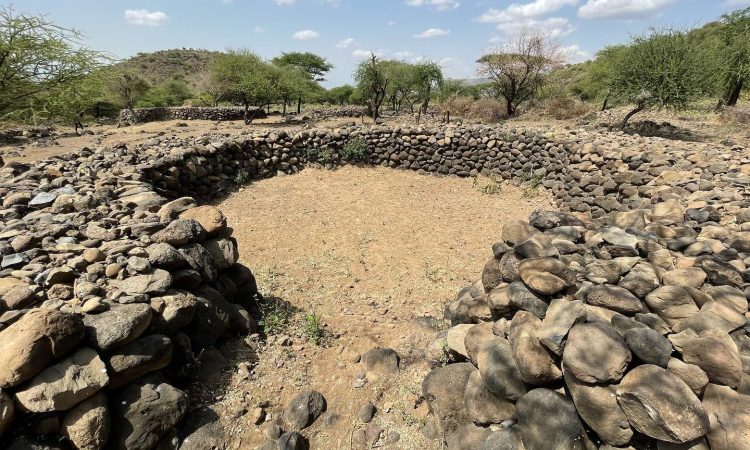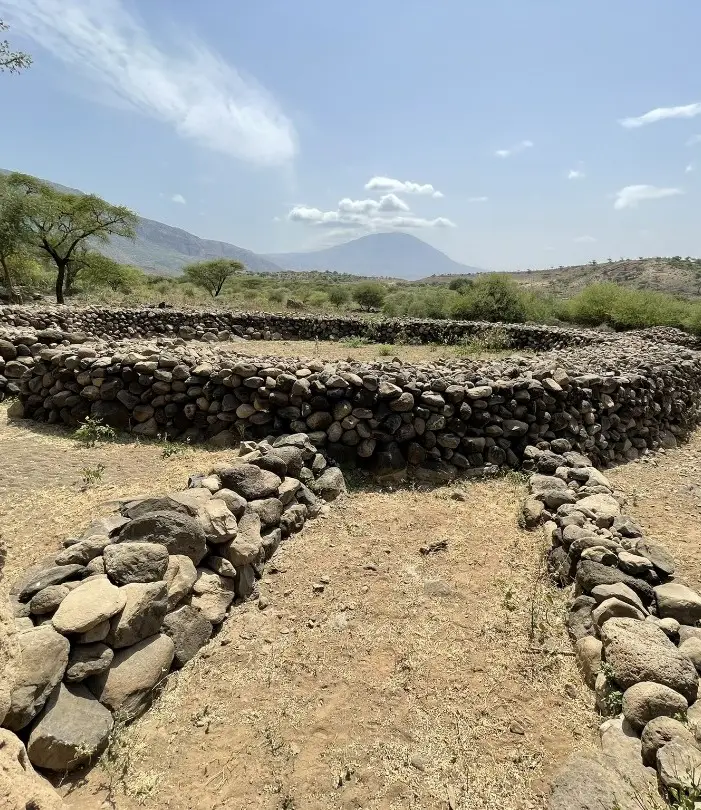Explore Engaruka Ruins: A Quick Overview And Its History : The Engaruka, as it is generally known among historical organizations, is a well-known historical landmark that shows a famous iron-age farming village that was founded in the 15th century. Gustav Fisher, a German scientist, made the first formal discovery of this site in 1883, comparing the Engaruka ruins to the broken walls of ancient castles.

The researchers were able to confirm that Engaruka once housed seven villages inhabited by thousands of people who devised a sophisticated irrigation and farming system that included canals lined with stone blocks that channeled water from the rift escarpment to several stone-lined cultivation terraces.
THE ENGARUKA HISTORICAL SITE
A group of Iron Age farmers constructed a massive, continuous settlement with thousands of residents in the foothills of the Rift Valley escarpment during the fifteenth century. They devised an intricate system of irrigation and cultivation that involved the use of a stone-block canal to send water to terraces covered in stones from the rift escarpment’s highlands for cultivation.
While stall-fed cow dung improved soil fertility in the cropping plots, precautions were taken to prevent soil erosion. Around the middle of the eighteenth century, Engaruka was abandoned for no apparent reason. This site begs a number of issues, such as the identity of its founders, how they devised such a complex agricultural system, and why they left the site unfinished.
The Iraqw ancestors, an agricultural tribe of Cushitic speakers residing in the northern Tanzanian Mbulu Highlands, are credited with building Engaruka. Intensive, self-contained farming is practiced in modern Iraq, akin to the Engaruka ruins with stone-walled canals, dams, and furrows.
Iraqi traditions state that, after conflicts with the Barbaig, a sub-group of the Datooga, who are known to have been herders in the Crater Highlands in the north of Engaruka before the Maasai arrived, they made their final, significant migration to the current inhabiting area two or three centuries ago.
The migration of the population is said to be consistent with the time of the Engaruka’s abandonment, which is thought to have taken place between 1700 and 1750. Furthermore, it roughly corresponds with the start of the disappearance of the flow of the River Engarukar and other streams that flow downhill from the highlands of Ngorongoro, which are essential water sources for Engaruka’s irrigation techniques. When the Maasai, the current residents of Engaruka, ancestors arrived in the area around the 18th century, the Iraqis were already residing there.
Engaruka has also been connected to the Sonjo, a small Bantu-speaking community located about 60 kilometers to the northwest. These are renowned for using irrigation systems for farming, much like the Iraqis. In addition, the Sonjo have terraced village sites that are far less elaborate than those at Engaruka. Recent investigations have also revealed new insights into the Middle Stone Age and pastoral Neolithic occupational histories of the region.

ENGARUKA, TANZANIA, ARCHAEOLOGICAL RESEARCH BACKGROUND
By July 5, 1883, Gustav Fischer was the first explorer to traverse through the remains of Ngaruku and disclose their existence. These ruins reminded him of old castles with crumbling walls. Schoeller and Kaiser (1896–1897) described the ruins of “Ngaruku,” which included enormous stone circles and dams.
Hans Reck conducted the first thorough archeological study in 1913. When Louis and Mary Leakey visited the location in 1935, they were dissatisfied to find that there were no graves. These estimated a population of thirty thousand, but that number is now regarded as inflated.
Later, excavations at Engaruka were conducted by John Sutton of the British Institute in Eastern Africa. A study team led by Ari Siiriainen was dispatched by the University of Helsinki’s Department of Archaeology between 2002 and 2005. Daryl Stump of University College London carried out research between 2001 and 2004 for his doctoral thesis. In 2006, Siiriainen’s research at the University of Helsinki was carried out with an emphasis on the connection between the Sonjo region and Engaruka.


